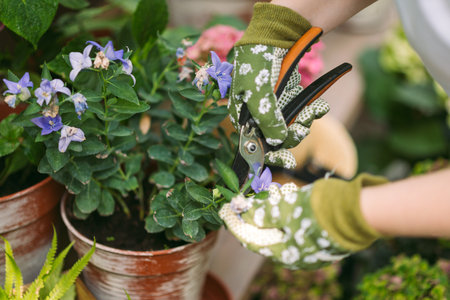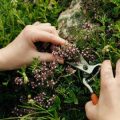Introduction to Sustainable Cut Flowers
When creating stunning cut flower arrangements, it’s easy to focus solely on color, fragrance, and style. But as more Americans embrace eco-friendly lifestyles, it’s time to consider the environmental impact of our floral choices. By integrating sustainable practices—like selecting native and eco-friendly annuals and perennials—you can enjoy fresh bouquets that not only brighten your home but also support local ecosystems and reduce your carbon footprint. Native plants are adapted to your region’s climate and soil, requiring less water and fewer chemicals, while annuals and perennials grown sustainably provide blooms year after year with minimal input. Choosing wisely means your flower arrangements don’t just look good—they do good. Discover how selecting the right flowers can help cultivate a greener home and a healthier planet, making every bouquet a celebration of beauty and sustainability.
Top Annuals for Eco-Friendly Bouquets
When it comes to creating vibrant, sustainable cut flower arrangements, annuals are a go-to choice for many American gardeners. These flowers grow quickly, bloom profusely, and can be sown directly from seed each year. Even better, choosing the right annuals supports pollinators like bees and butterflies, making your bouquet not only beautiful but also environmentally beneficial. Below is a table highlighting some of the most popular U.S. annuals that are easy to grow, ideal for cutting, and excellent for supporting local ecosystems.
| Flower | Notable Features | Pollinator Benefits | Sustainability Tips |
|---|---|---|---|
| Zinnia | Bright colors, long vase life | Attracts bees and butterflies | Direct sow in sunny spots; deadhead for more blooms |
| Cosmos | Dainty petals, feathery foliage | Highly attractive to bees | Tolerates poor soil; minimal watering needed once established |
| Sunflower (Annual) | Tall stems, bold blossoms | Nectar-rich for birds & pollinators | Plant seeds after last frost; choose pollen-free varieties for indoor use if allergies are a concern |
| Snapdragon | Varied colors, unique shape | Loved by bumblebees and hummingbirds | Pinch tips early for bushier plants; compost spent blooms |
| Ageratum (Floss Flower) | Puffy blue or white clusters | Draws in butterflies and native bees | Add mulch to retain moisture; companion plant with veggies to attract pollinators to your garden beds |
| Celosia (Cockscomb) | Bottlebrush or brain-like shapes in vivid hues | Visited by pollinators throughout summer and fall | Drought-tolerant once established; leave some seed heads for birds at season’s end |
| Bachelor’s Button (Cornflower) | Classic blue color, delicate texture | Nectar source for honeybees and bumblebees | Easily self-seeds; ideal for wildflower patches or borders to minimize maintenance year after year |
These annuals are not just easy on the eyes—they’re also low-maintenance and promote biodiversity in your backyard. By integrating these flowers into your cut flower garden, you’ll create bouquets that reflect both natural beauty and a commitment to eco-friendly living. For best results, opt for organic seeds when possible and avoid synthetic pesticides. This way, every arrangement you create is a step toward healthier soil, happier pollinators, and a more sustainable floral tradition in your home.
![]()
3. Outstanding Perennials for Long-Lasting Arrangements
When it comes to sustainable cut flower arrangements, perennials are a gardener’s best friend. Not only do they return year after year, but many perennial blooms are drought-tolerant and require minimal maintenance—making them an eco-friendly choice for both your garden and your vases. By selecting the right varieties, you can enjoy gorgeous bouquets that celebrate the beauty of each season while supporting pollinators and reducing water use.
Drought-Tolerant Favorites
Some of the top-performing perennials for American gardens include Echinacea (coneflower), Rudbeckia (black-eyed Susan), and Gaillardia (blanket flower). These native species thrive in a range of climates and soils, require little supplemental irrigation once established, and continue to bloom even during hot, dry spells. Their sturdy stems and bold colors make them perfect for cutting and arranging.
Low-Maintenance Blooms with Lasting Impact
If you’re looking for flowers that practically take care of themselves, consider Russian sage, yarrow, and sedum. These resilient perennials offer long-lasting blossoms from summer into fall. Their unique textures and subtle hues add depth to any arrangement, while their ability to attract beneficial insects helps maintain garden health naturally.
Eco-Conscious Choices for Your Cutting Garden
Incorporating perennial flowers into your cutting garden not only reduces the need to replant each year but also minimizes resource consumption. By choosing varieties adapted to your local climate—especially those native to North America—you support biodiversity, save water, and create a more sustainable landscape. Whether you’re designing a wildflower-inspired bouquet or a sophisticated centerpiece, these reliable perennials ensure your arrangements are as environmentally friendly as they are beautiful.
4. Native and Pollinator-Friendly Choices
When designing cut flower arrangements, choosing native American flowers and pollinator-attracting species is a beautiful way to support local biodiversity while celebrating the natural beauty of your region. Native plants are uniquely adapted to local climates and soils, requiring less water and fewer chemical inputs—perfect for gardeners who prioritize sustainability and eco-friendly practices. Plus, these blooms are essential for supporting bees, butterflies, and other beneficial pollinators that help keep our ecosystems thriving.
Why Choose Native and Pollinator-Friendly Flowers?
Native flowers not only look stunning in vases, but also contribute to a healthy environment by providing food and habitat for local wildlife. Incorporating these species into your cut flower garden ensures that your arrangements are both sustainable and supportive of vital pollinator populations.
Top Native American Flowers for Cut Arrangements
| Flower Name | Pollinator Benefits | Vase Life | Eco-Friendly Notes |
|---|---|---|---|
| Black-Eyed Susan (Rudbeckia hirta) | Attracts bees & butterflies | 7-10 days | Drought-tolerant, low-maintenance |
| Purple Coneflower (Echinacea purpurea) | Loved by bees & native pollinators | Up to 14 days | Supports local insects & birds |
| Bee Balm (Monarda didyma) | Nectar-rich for hummingbirds & bees | 5-7 days | Aromatic foliage deters pests naturally |
| Blazing Star (Liatris spicata) | Butterfly magnet | Up to 14 days | Tolerates poor soil conditions; native prairie plant |
| Yarrow (Achillea millefolium) | Attracts beneficial insects & butterflies | 7-10 days (fresh), dries well too! | Drought-resistant, enhances soil health |
| Smooth Blue Aster (Symphyotrichum laeve) | Late-season bee favorite | 6-8 days | Powers up fall gardens with color & nectar sources |
| Milkweed (Asclepias spp.) | Essential for monarch butterflies & bees | 5-7 days (select showy varieties) | Critical host plant for endangered pollinators |
Sustainable Tips for Harvesting Natives for Bouquets
- Select responsibly: Grow or source native flowers from reputable nurseries rather than wild-harvesting, which can disrupt fragile ecosystems.
- Stagger cuts: Harvest stems from different plants each time so you don’t over-stress individual specimens.
- Avoid pesticides: Skip chemicals that harm pollinators—healthy, chemical-free blooms are best for both bouquets and biodiversity.
The Eco-Benefits of Going Native in Your Vase Arrangements
Bouquets made with native and pollinator-friendly flowers tell a story of environmental stewardship. Not only do they look uniquely American—filled with prairie charm or woodland elegance—but they also create mini sanctuaries for pollinators right in your own backyard. By choosing these sustainable options, your floral displays become part of a larger movement to protect our planet’s precious biodiversity.
5. Tips for Sustainable Harvesting and Conditioning
If you want your cut flower arrangements to be both beautiful and eco-friendly, the way you harvest and condition your flowers matters. Practicing mindful harvesting not only keeps your garden thriving year after year, but it also ensures your blooms look fresh and vibrant in the vase for as long as possible. Here are best practices inspired by sustainable gardening principles and American gardening traditions.
Harvest at the Right Time
For annuals and perennials alike, timing is everything. Early morning or late evening is ideal—this is when plants are most hydrated. Use clean, sharp shears to make a clean cut, avoiding jagged stems that can introduce disease. For sustainability, always leave enough stem and foliage on the plant so it can continue photosynthesizing and producing future blooms.
Selective Cutting for Plant Health
Never take more than one-third of the available blooms from any single plant at one time. This practice allows your plants to recover quickly and maintain their natural rhythm. Rotate your cutting spots around the garden to prevent over-harvesting from any one area.
Eco-Conscious Conditioning Techniques
After harvesting, remove any leaves below the water line to prevent bacterial growth—a simple step that extends vase life without chemicals. Give stems a fresh diagonal cut before placing them in clean water. If possible, use rainwater or filtered tap water to reduce chemical exposure. Condition flowers in a cool, shaded place for a few hours before arranging; this helps them rehydrate naturally and stand tall in your bouquet.
Choose Natural Preservatives
Skip the synthetic floral preservatives! Instead, try homemade solutions such as a splash of apple cider vinegar and sugar in the water to nourish your blooms. Change the vase water every two days, composting wilted stems to return nutrients to the earth—an easy way to close the loop in your sustainable flower practice.
Support Pollinators and Biodiversity
By leaving some blossoms on your plants, you support local pollinators like bees and butterflies—a win-win for both your garden’s health and the planet. Remember: sustainable harvesting isn’t just about what you take, but also about what you give back to nature.
6. Arranging and Displaying with a Green Mindset
Creating stunning cut flower arrangements isn’t just about choosing the most beautiful annuals and perennials—it’s also about honoring the planet with every display. By embracing eco-friendly practices, you can transform your bouquets into sustainable statements. Start by selecting vessels that have a story: repurposed mason jars, vintage pitchers, or even cleaned-out tin cans make charming, low-waste bases for your blooms. Instead of using floral foam, which is not biodegradable, opt for natural supports like twisted branches, chicken wire (which can be reused), or even pebbles at the bottom of your container to help stems stay in place. For binding your arrangements, skip plastic ties and reach for twine made from organic cotton or hemp. Enhance your display by incorporating foliage and dried elements harvested from your own garden—think seed pods, grasses, or even autumn leaves—to add texture while minimizing commercial waste. Finally, when your arrangement starts to fade, compost the spent flowers and greenery to return nutrients back to the earth. With a little creativity and a commitment to reuse and recycle, your annuals and perennials can brighten your home while treading lightly on the planet.


